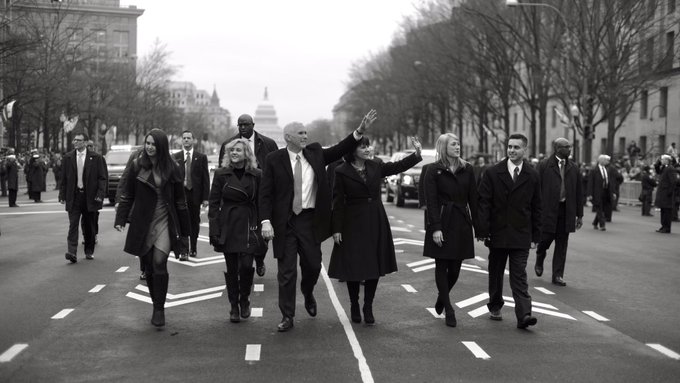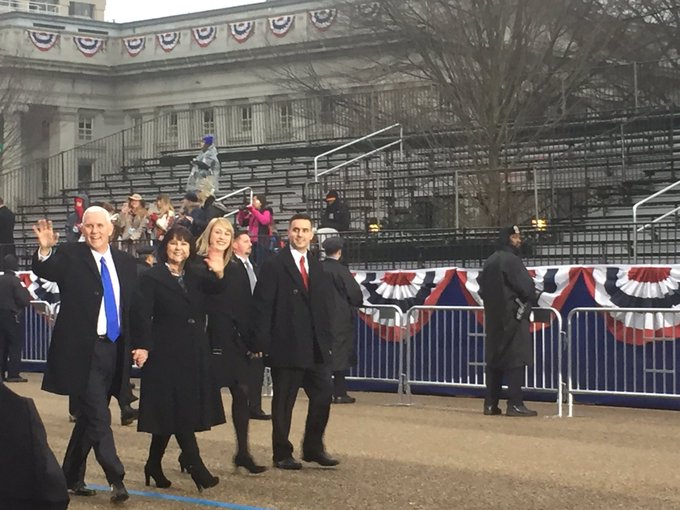
Low turnout. (AP Photo/Matt Rourke)
Repunblished with permission from The Atlantic and the authors Nicole DahmenAssistant Professor of Visual Communication, University of OregonDon HeiderDean of the School of Communication, Loyola University Chicago
“When photography was invented,” photo historian Vicki Goldberg once said, “it was thought to be an equivalent to truth. It was truth with a capital T.”
But as viewers quickly learned, seeing isn’t always believing. Even in the early history of photography, hoaxes like the Cottingley fairies taught people to question the validity of the images they saw. Today, we’re well aware that photos can be digitally altered—which means that the public trusts the authority of photos, including journalistic images, a whole lot less.
It is valuable for members of the public to question the authenticity of images that they see. But as contemporary audiences have grown more sophisticated about digitally manipulated images, they are now faced with a new form of manipulation: photos coupled with political propaganda, further pushing society toward the post-truth age.
Consider two photos taken of US vice president Mike Pence on Inauguration Day. Pence tweeted one photo from the parade, which was taken from a head-on camera angle. The angle of the photo focuses solely on Pence and his family walking down the street, showing nothing of the parade onlookers.
View image on Twitter

Follow
 Vice President Pence
Vice President Pence ✔@VP
Making the historic journey from US Capitol to The @WhiteHouse with Karen & our children at our sides is a memory we will forever cherish.
12:58 AM - 21 Jan 2017
3,3123,312 Retweets
16,29816,298 likes
Contrast that with a photo tweeted by Deborah Berry, USA Today’s Washington correspondent. Berry’s photo, taken from an angle, captures both Pence walking down the street and the mostly-empty grandstand on the side of the road.
View image on Twitter

Follow
 Deborah Berry
Deborah Berry ✔@dberrygannett
Vice President Mike Pence just passed ...#InaugurationDay2017
11:53 PM - 20 Jan 2017
1,1211,121 Retweets
1,3291,329 likes
Neither photo is digitally altered. But the “truth” reflected by the images is dramatically different.
Given the fungibility of photographic truths, perhaps Donald Trump’s administration thought it could get away with shaping a self-serving narrative about the crowd turnout on Inauguration Day. In the first news briefing of Trump’s administration, press secretary Sean Spicer stepped up to the podium and lied, falsely accusing the media of misleading the public about the inauguration attendance.
Showing a photo taken from Trump’s perspective, Spicer claimed that the media “intentionally framed” photographs to minimize the size of the crowd on the national mall in DC. Trump himself blamed the camera angles of select inauguration photos, chastising the media for showing “very unflattering” photos. In reference to aerial photographs captured by Reuters during Obama’s and Trump’s inauguration, Spicer blamed the floor coverings used to protect the grass on the Mall as distorting the number of people in attendance.
But despite Spicer’s claim that Trump had the “largest audience ever to witness an inauguration, period,” all available evidence, including independently captured news media photographs, suggests otherwise. The Trump administration willingly introduced conflicting narratives of authentic photographic content to distort the truth—and it appears to be working. A survey by the Washington Post found that, when Trump supporters were shown the photographic evidence of the size of the Obama inauguration crowd as compared to the size of the Trump inauguration crowd, one in seven “gave the clearly false answer,” stating that the Trump crowd was larger.
The Trump narrative surrounding the photo is part of the administration’s larger assault on the integrity and trustworthiness of journalism. Equally problematic is Trump’s strategic use of social media. Through this channel, the Trump administration can sell an image—and a subsequent interpretation—to the public without the mainstream news media acting as watchdogs. If the Trump administration continues to convince Americans to distrust the work of journalists, while simultaneously speaking directly to the public, they are one step closer to inoculating us against reality.
So what can we do?
In her prescient work, visual communication scholar Julianne Newton provides ethical recommendations for the capturing, treatment, and interpretation of visual evidence.
Taking Newton’s recommendations as a starting point, the news media must be transparent in the photographic process and diligent in adhering to the highest standards of ethical reporting. Both the news media and nonpartisan groups must also consider new approaches to fact-checking, such as this annotated news video refuting Spicer’s presented White House “evidence.”
As for society at large, we must emphasize media literacy, educating audiences about how to critically evaluate the credibility of content. While there are numerous points to consider in analyzing images, these are the basics that every news consumer should know.
1) Consider the source
Audiences must learn to separate mainstream news media content from partisan news sources, advertising and public relations materials, and propaganda. The core journalism tenet is obligation to the truth. Photojournalistic images, like all news reporting, are a construction of reality. But mainstream visual journalists diligently work to ensure that their photos are accurate representations, capturing—in the words of Carl Bernstein—the “best obtainable version of the truth.”
2) Pay attention to aesthetics
Does the photo appear to have a bizarre angle or strange crop, as if something has been purposely eliminated? Was the image taken from an extremely close perspective to perhaps emphasize—and thereby distort or exploit—a subject’s age or physical characteristic?
3) Ask “What is the narrative of the photo”?
Does the caption or explanation seem to reflect the photo content, or does it make interpretations that can’t be verified visually or through an accompanying article? Does the narrative quote verified sources documenting the scene, or does it quote individuals promoting a certain agenda without news media scrutiny?
4) Cross-check information
Given the multitude of sources and content available today, audiences should cross-check information, critically assessing factually-based evidence from politically-motivated propaganda. Are there multiple images from the scene? Do the images work together to tell the same story? Does one source present a unique perspective that is perhaps contrary to or purposely skewed from what the majority of other sources are reporting?
All of us, liberal, conservative, or otherwise, must be willing to abandon partisan loyalty in favor of logically considering the information presented to us. With photographs, as with all information, audiences should be skeptical. But knowing how to analyze images is critical to the future of our democracy.
No comments:
Post a Comment